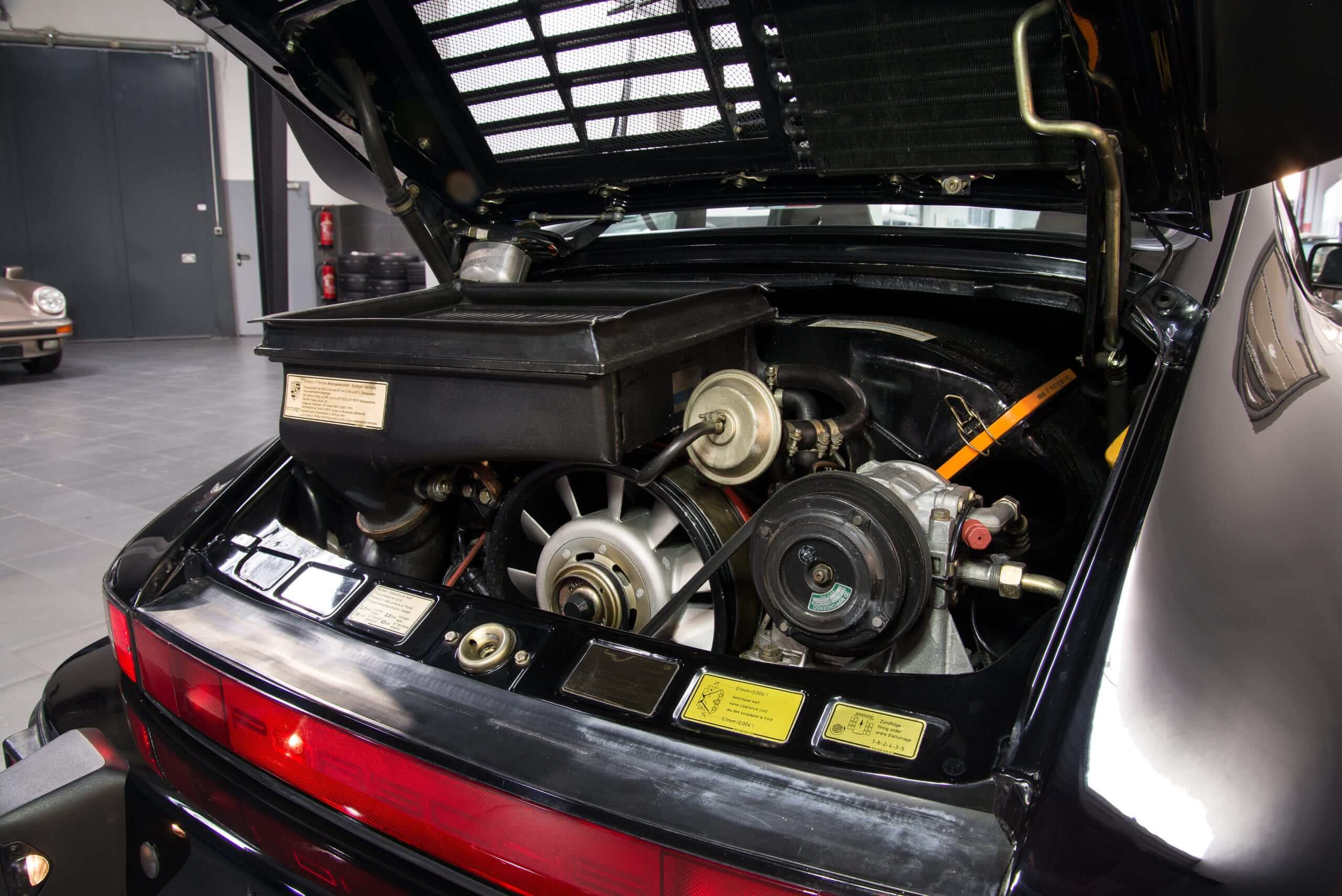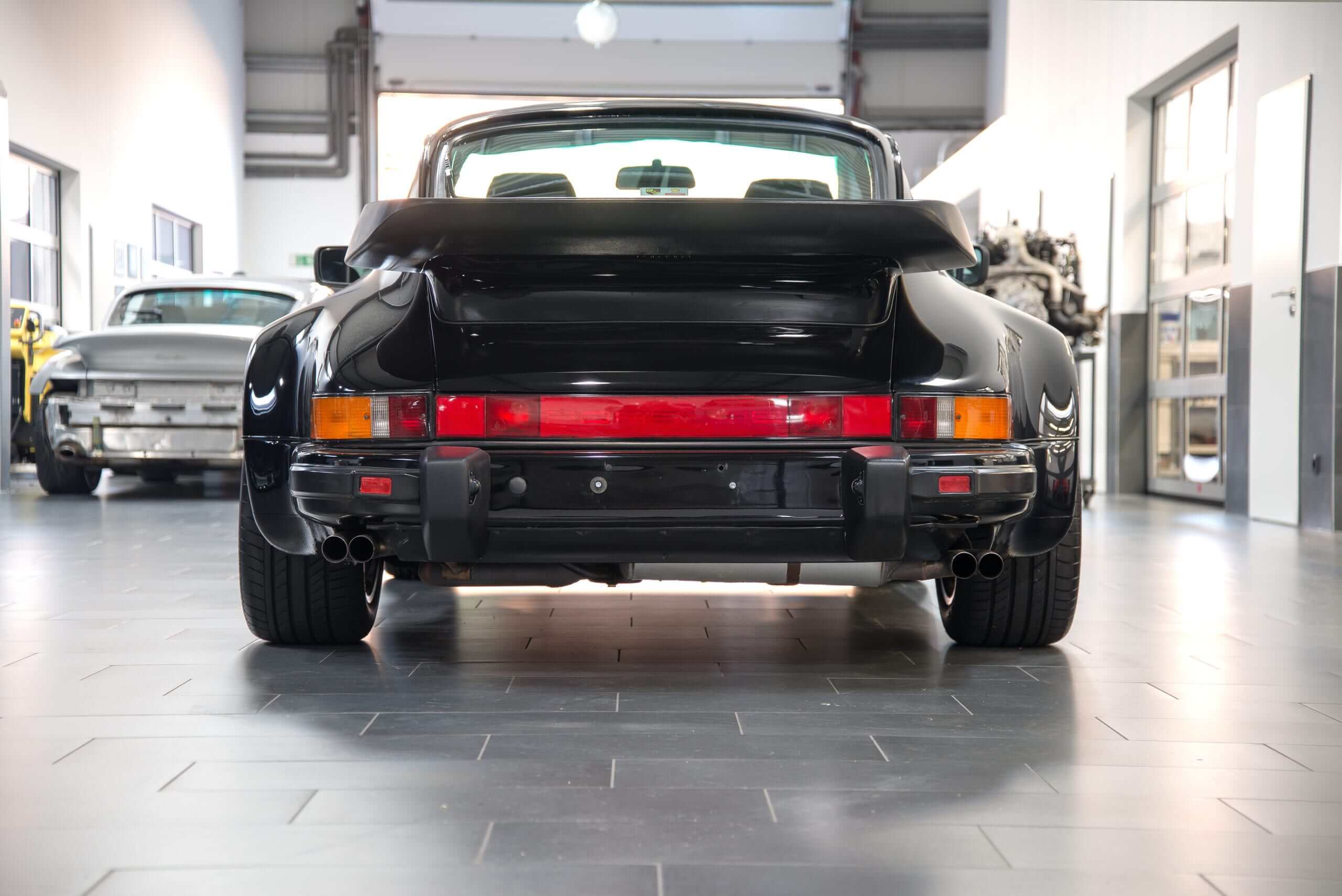Buying Advice
Porsche 911 (930) Turbo buying advice
In 2024, Porsche celebrates the “50th anniversary of the 911 Turbo”. Hans Mezger would have celebrated his 95th birthday in 2024. He brought the Turbo to the racetrack and later into series production. We are therefore publishing a buyer’s guide to the 930 Turbo, better known as the “Porsche 911 Turbo”. We will focus specifically on the Porsche 911 Turbo 3.0 (1975 – 1977) and Porsche 911 Turbo 3.3 (1978 – 1989) models.
Porsche 911 (930) Turbo 3.0 buying advice
The selection of used 911 Turbo 3.0s is very small. It is particularly difficult to find vehicles in original and unrestored condition. In total, only 2850 examples were produced in the model years 1975 to 1977. The very first 911 Turbo 3.0 from the first five months of production were still built with the “old”, chrome-plated exterior mirrors on the driver’s side, which is why these very early Turbos are even more sought-after among collectors than the other models from the first 1975 model year already are. In model year 1976, the Turbo 3.0 was still delivered with the forged 15-inch Fuchs rims. In its original condition, it has the typical look of the 911 Turbo 3.0.

The last 911 Turbo 3.0 from the 1977 model year were already fitted with 16-inch Fuchs rims and the black stone guard film on the rear fenders. But of course you can also convert the 16-inch rims of the 1977 911 Turbo back to 15-inch if you can’t find a decent car from 1975 or 1976. If you choose a US model, you should be aware that these cars were delivered with the slightly lower output of 245 hp due to the stricter emissions regulations. However, converting to the European standard of 260 hp is easily possible.
If you are looking for a very special air-cooled Porsche 911 with an incomparable silhouette and have the budget for it, the 911 Turbo 3.0 is the perfect choice. Almost no other Porsche 911 from series production is more exciting and thrilling.
Porsche Turbo 3.0 price development
A Porsche 911 Turbo has always been something special. But the first 911 Turbo 3.0 in particular was way ahead of its time. Today, it is one of the most sought-after collector’s items in the air-cooled 911 range. However, because a 911 Turbo 3.0 was driven almost exclusively by particularly solvent owners, the care and condition is often better than that of normal 911s with naturally aspirated engines. Prices are also back at a more moderate level in 2024. After €245,000 was paid for a Turbo 3.0 in condition grade 1 in 2017, prices are currently around €200,000 again. For vehicles in particularly rare colors, surcharges of over €50,000 are not uncommon.

Purchase advice and price trends of the 911 Turbo 3.0
The complete purchase advice and price developments from 2016 to 2024 for the 911 Turbo 3.0 with the points body, engine, valve guides, chain tensioner, oil leaks, oil thermostat, transmission, exhaust system, heating, turbocharger, wastegate, interior, electrics and further information can be found in our new book on the 911 G-model “Air-Cooled Years”.

Porsche 911 (930) Turbo 3.3 buying advice
Every Porsche 911 Turbo is a special car, regardless of whether it is from the first model year 1978 or the last model year 1989. This exclusive vehicle was usually driven by people who had an above-average budget for the maintenance and care of their car. This is why the condition of used 911 Turbo cars is often better than that of the “normal” 911 Carrera models with naturally aspirated engines. Since only a few 911 Turbo were used as normal business vehicles, the mileage is often quite low. However, the low mileage of the Turbo 3.3 may also be due to the fact that even in old age the maintenance and servicing costs are still very high, and the cars are often only really driven on special occasions. As the engine output has not changed between the first and last model year, the performance of all 911 Turbo 3.3s is similarly tremendous.

Visual updates increase attractiveness
The Turbo models from model year 1980 onwards are particularly visually attractive because the twin-pipe exhaust system was used from this point onwards. Without this exhaust system, a 911 Turbo can hardly be distinguished from a 911 Carrera with a turbo look. Another important point: it was only from the 1981 model year onwards that Porsche’s bodies were really fully galvanized.

The engine of the 911 Turbo 3.3 underwent a truly significant update from model year 1983 onwards. Fuel consumption was significantly reduced thanks to a revised mixture preparation system and a retuned ignition. In conjunction with a modified main silencer, the torque also increased noticeably. The designation of the engines also changed from this point onwards.

Turbo - Hans Mezger Edition 2020 with his last interview
In honor of Hans Mezger, the book "911 Turbo Air-Cooled Years 1975-1998" was published in the "Hans-Mezger Edition 2020". It was published in a limited edition of 2020 copies and, in addition to a detailed biography, also contains his last interview, which he gave in October 2019.
LIMITED EDITION Porsche 911 Carrera 3.0 Model Car Hans Mezger
On the first anniversary of Hans Mezger’s death, his private 911 Carrera 3.0 was released as a model car by Minichamps on June 10, 2021 in a limited edition of 2020 units.
Since there are hardly any noticeable price differences between the models before and after model year 1983, the decision should be made in favor of the later models.
The last three model years of the 911 Turbo
From the 1987 model year, the 911 Turbo became even more visually attractive with a modified light strip at the rear. This slightly modified look heralded the last three model years. If you can afford it and want it, you should definitely choose a vehicle from the last model year 1989. Only these models were equipped with the highly sought-after five-speed gearbox.

Porsche 911 (930) Turbo 3.3 Price development
Well-maintained examples of the 911 Turbo 3.3 are always in high demand, especially if they have a traceable maintenance history. This can also be seen in the prices on the used car market. From 2015 to 2016 alone, the prices of the 930 Turbo rose by over 40 percent. According to the experts at Classic Data, a Turbo 3.3 in very good condition traded at €150,000 from this period onwards. Even in the coronavirus crisis year of 2020, the 930 was able to maintain its price level and is currently being traded at €156,000. For the 1376 Turbo Coupés with the coveted five-speed gearbox from the last model year 1989, a surcharge of at least €25,000 is due.

Conclusion Porsche 911 Turbo 3.3
Those who can afford the six-figure budget for a 911 Turbo 3.3 and are not bothered by the quite noticeable maintenance costs will enjoy one of the most charismatic 911s ever on a daily basis.
The 911 Turbo 3.3 is a true Porsche icon, a very special car. Whether with four- or five-speed transmission. In no other 911 are you pressed more brutally into the seats than in the 911 Turbo 3.3.
You still have to be able to drive and control this car. As the power output of 300 hp did not change between 1978 and 1989, the performance of the 911 Turbo is always just as explosive. All 911 Turbo models after 1989 became softer, more perfect and less exciting. If you want the “real” 911 Turbo, there is no way around the model years 1978 to 1989, unless you opt for the predecessor 911 Turbo 3.0.
Detailed buying advice on the Porsche 911 Turbo
Find out what you need to know about the exhaust system, turbocharger and wastegate, gearbox and chassis in the second part of the buying guide in our new book Porsche 911 Turbo Air Cooled Years 1975 – 1998 / Hans Mezger Edition 2020






